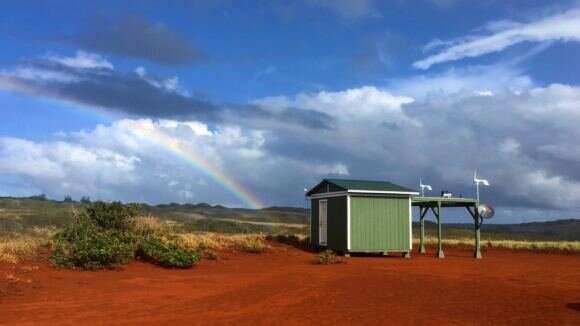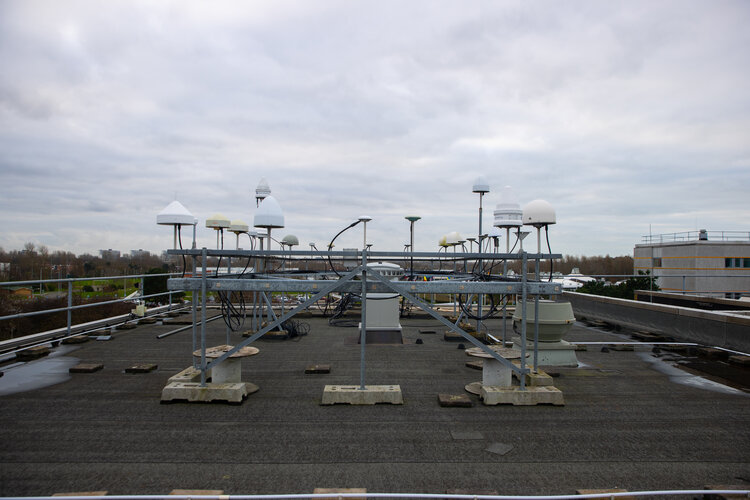
Copernical Team
A Chinese space tug just grappled a dead satellite

A Chinese satellite pulled a defunct navigation satellite out of the way of other satellites on January 22. The satellite, called SJ-21, appeared to operate as a space tug when it grappled onto the navigation satellite from the Chinese CompassG2 network. The operation details didn't come from Chinese authorities but from a report by ExoAnalytic Solutions, a commercial space monitoring company.
Chinese authorities are tight-lipped about the operation, but what can observations tell us about Chinese capabilities?
Earth's geosynchronous orbit is crowded, so on the face of it, having one less piece of space debris is a good thing for all satellite operators. But people can get suspicious when China does something like this.
Roof of the satnav world
 Image:
Roof of the satnav world
Image:
Roof of the satnav world Lion will roam above the planet - KP Labs to release their "king of orbit"
 KP Labs is beginning to work on an expansion of its product portfolio with an on-board computer for small satellites that will streamline and speed up on-orbit data processing, as well as ensure greater hardware reliability in modern satellite missions. This is the third Data Processing Unit (DPU) designed by KP Labs, and the first one suited for use in larger missions. After the introduction of
KP Labs is beginning to work on an expansion of its product portfolio with an on-board computer for small satellites that will streamline and speed up on-orbit data processing, as well as ensure greater hardware reliability in modern satellite missions. This is the third Data Processing Unit (DPU) designed by KP Labs, and the first one suited for use in larger missions. After the introduction of China launches L-SAR 01A satellite for land observing
 China launched a Long March-4C rocket to place a new satellite in space Wednesday.
The rocket blasted off at 7:44 a.m. (Beijing Time) at the Jiuquan Satellite Launch Center in northwest China and soon sent the L-SAR 01A satellite into preset orbit.
The satellite, equipped with L-band synthetic aperture radar (SAR), will be used to monitor the geological environment, landslides and ea
China launched a Long March-4C rocket to place a new satellite in space Wednesday.
The rocket blasted off at 7:44 a.m. (Beijing Time) at the Jiuquan Satellite Launch Center in northwest China and soon sent the L-SAR 01A satellite into preset orbit.
The satellite, equipped with L-band synthetic aperture radar (SAR), will be used to monitor the geological environment, landslides and ea How big does your quantum computer need to be?
 Quantum computers are expected to be disruptive and potentially impact many industry sectors. So researchers in the United Kingdom and the Netherlands decided to explore two very different quantum problems: breaking the encryption of Bitcoin (a digital currency) and simulating the molecule responsible for biological nitrogen fixation.
In AVS Quantum Science, from AIP Publishing, the resear
Quantum computers are expected to be disruptive and potentially impact many industry sectors. So researchers in the United Kingdom and the Netherlands decided to explore two very different quantum problems: breaking the encryption of Bitcoin (a digital currency) and simulating the molecule responsible for biological nitrogen fixation.
In AVS Quantum Science, from AIP Publishing, the resear China to improve space infrastructure with new satellites, technologies: white paper
 China will continue to improve its space infrastructure, and integrate remote-sensing, communications, navigation, and positioning satellite technologies in the next five years, according to a white paper released on Friday.
The white paper, titled "China's Space Program: A 2021 Perspective", was issued by the State Council Information Office of China.
According to the paper, China w
China will continue to improve its space infrastructure, and integrate remote-sensing, communications, navigation, and positioning satellite technologies in the next five years, according to a white paper released on Friday.
The white paper, titled "China's Space Program: A 2021 Perspective", was issued by the State Council Information Office of China.
According to the paper, China w Researchers achieve burning plasma regime for first time in lab
 After decades of fusion research, a burning plasma state was achieved on November 2020 and February 2021 at Lawrence Livermore National Laboratory's National Ignition Facility (NIF), the world's most energetic laser.
Obtaining a burning plasma is a critical step toward self-sustaining fusion energy. A burning plasma is one in which the fusion reactions themselves are the primary source of
After decades of fusion research, a burning plasma state was achieved on November 2020 and February 2021 at Lawrence Livermore National Laboratory's National Ignition Facility (NIF), the world's most energetic laser.
Obtaining a burning plasma is a critical step toward self-sustaining fusion energy. A burning plasma is one in which the fusion reactions themselves are the primary source of UCF to lead $10m NASA project to develop zero-carbon jet engines
 The University of Central Florida (UCF) is developing new technology that is expected to make airplane engines emission free, potentially revolutionizing the aviation industry.
UCF put together a team of experts and stakeholders to evaluate their innovation, which aims to not only make aviation fuel green, but also create engines and fueling systems that easily integrate into current airpo
The University of Central Florida (UCF) is developing new technology that is expected to make airplane engines emission free, potentially revolutionizing the aviation industry.
UCF put together a team of experts and stakeholders to evaluate their innovation, which aims to not only make aviation fuel green, but also create engines and fueling systems that easily integrate into current airpo D-Orbit merges with Breeze Holdings Acquisition Corp. to become Publicly Company
 D-Orbit S.p.A., an Italy-based and market leading space logistics and transportation company, has announced that it will become publicly listed through a business combination with Breeze Holdings Acquisition Corp. (NASDAQ: BREZ), a publicly traded special purpose acquisition company. The transaction values the Company at an enterprise value of approximately $1.28 billion post-money.
In con
D-Orbit S.p.A., an Italy-based and market leading space logistics and transportation company, has announced that it will become publicly listed through a business combination with Breeze Holdings Acquisition Corp. (NASDAQ: BREZ), a publicly traded special purpose acquisition company. The transaction values the Company at an enterprise value of approximately $1.28 billion post-money.
In con Chinese satellite reportedly grappled and moved spacecraft away from orbit
 The event was discussed as part of a webinar on managing the risks of satellite close approaches in geostationary orbit, hosted by the Center for Strategic and International Studies and the Secure World Foundation earlier this week.
Last week, China reportedly demonstrated yet another advancement in space-based technology and capabilities as an analytics firm claimed to have seen a satelli
The event was discussed as part of a webinar on managing the risks of satellite close approaches in geostationary orbit, hosted by the Center for Strategic and International Studies and the Secure World Foundation earlier this week.
Last week, China reportedly demonstrated yet another advancement in space-based technology and capabilities as an analytics firm claimed to have seen a satelli 
































